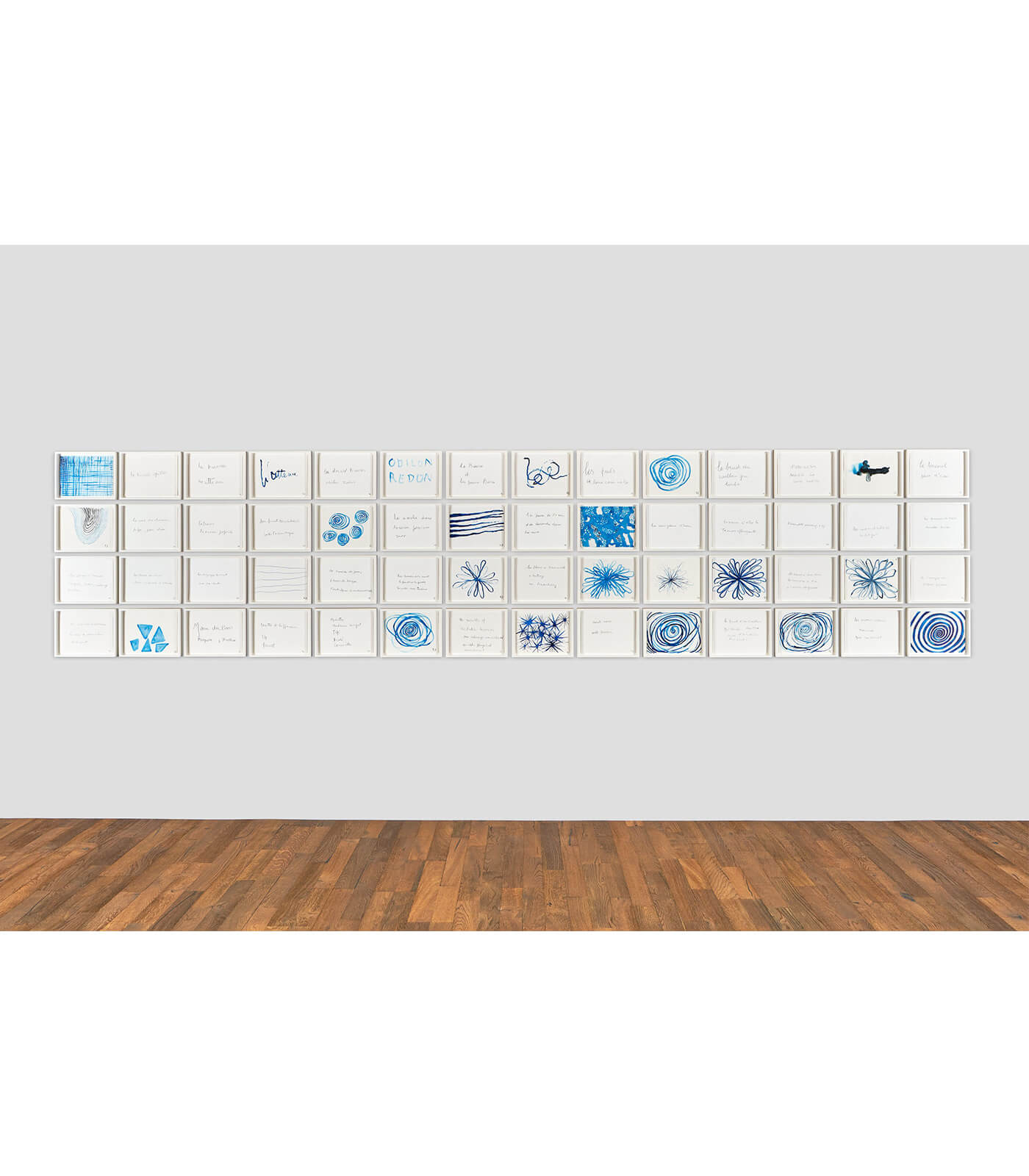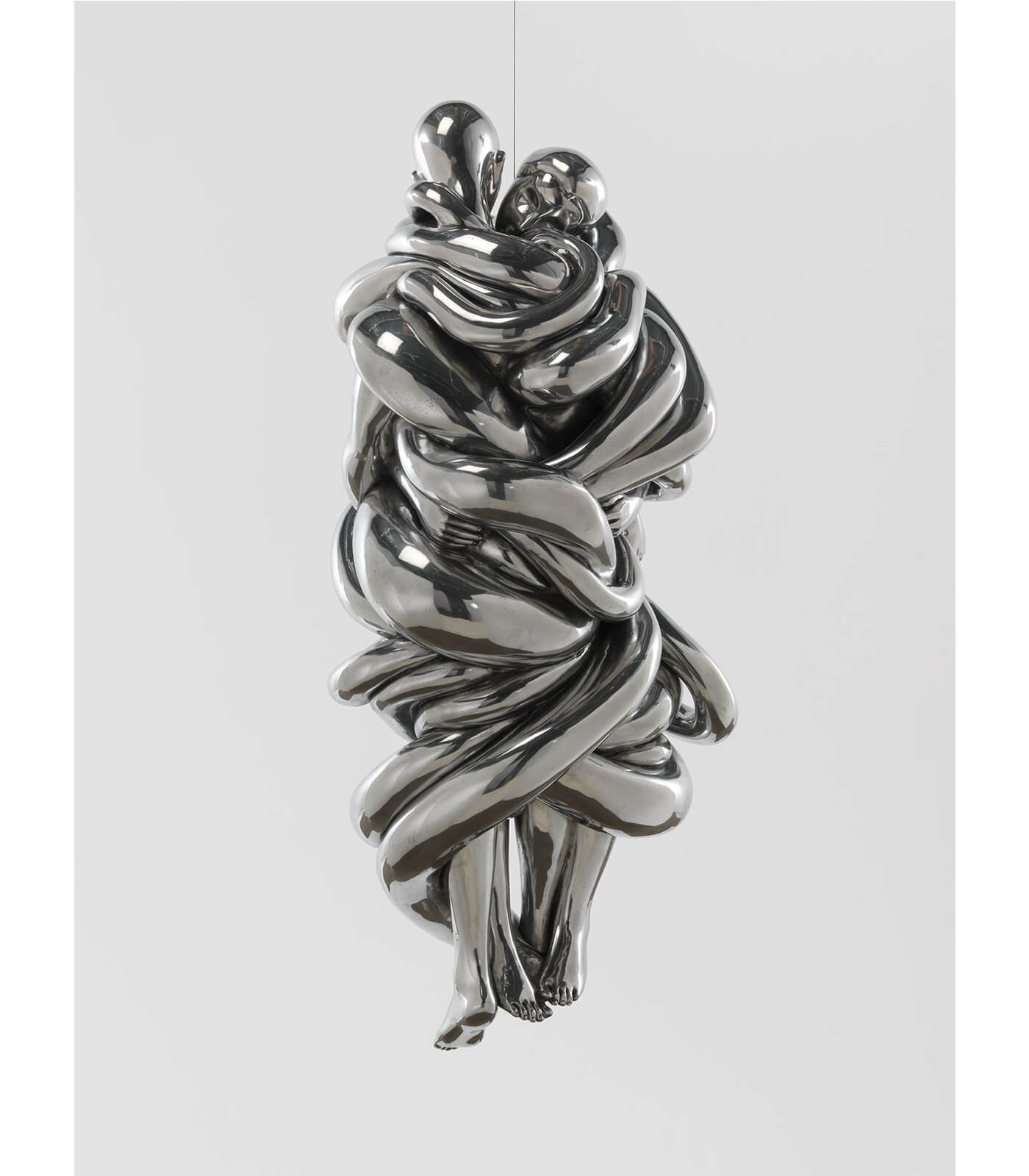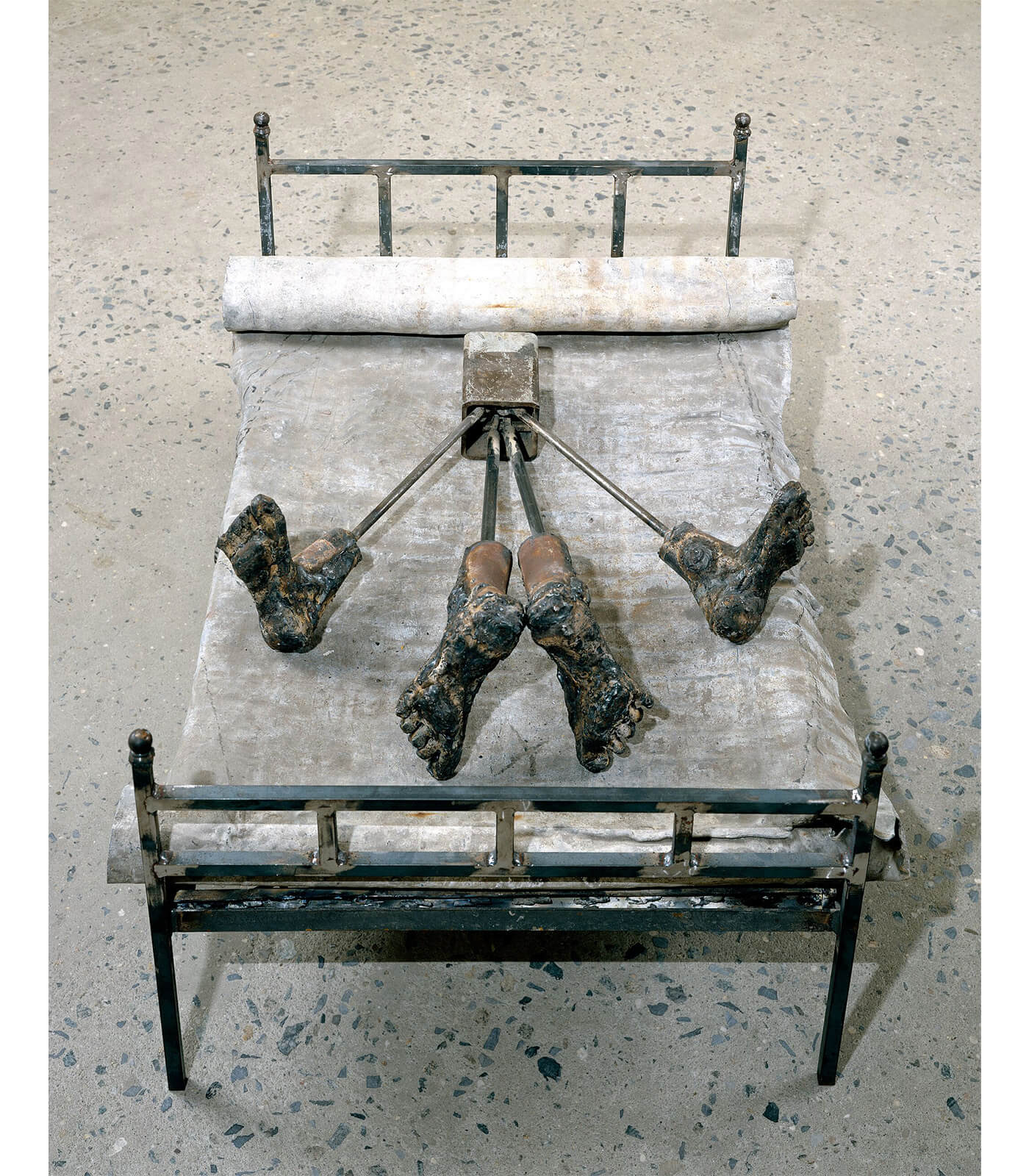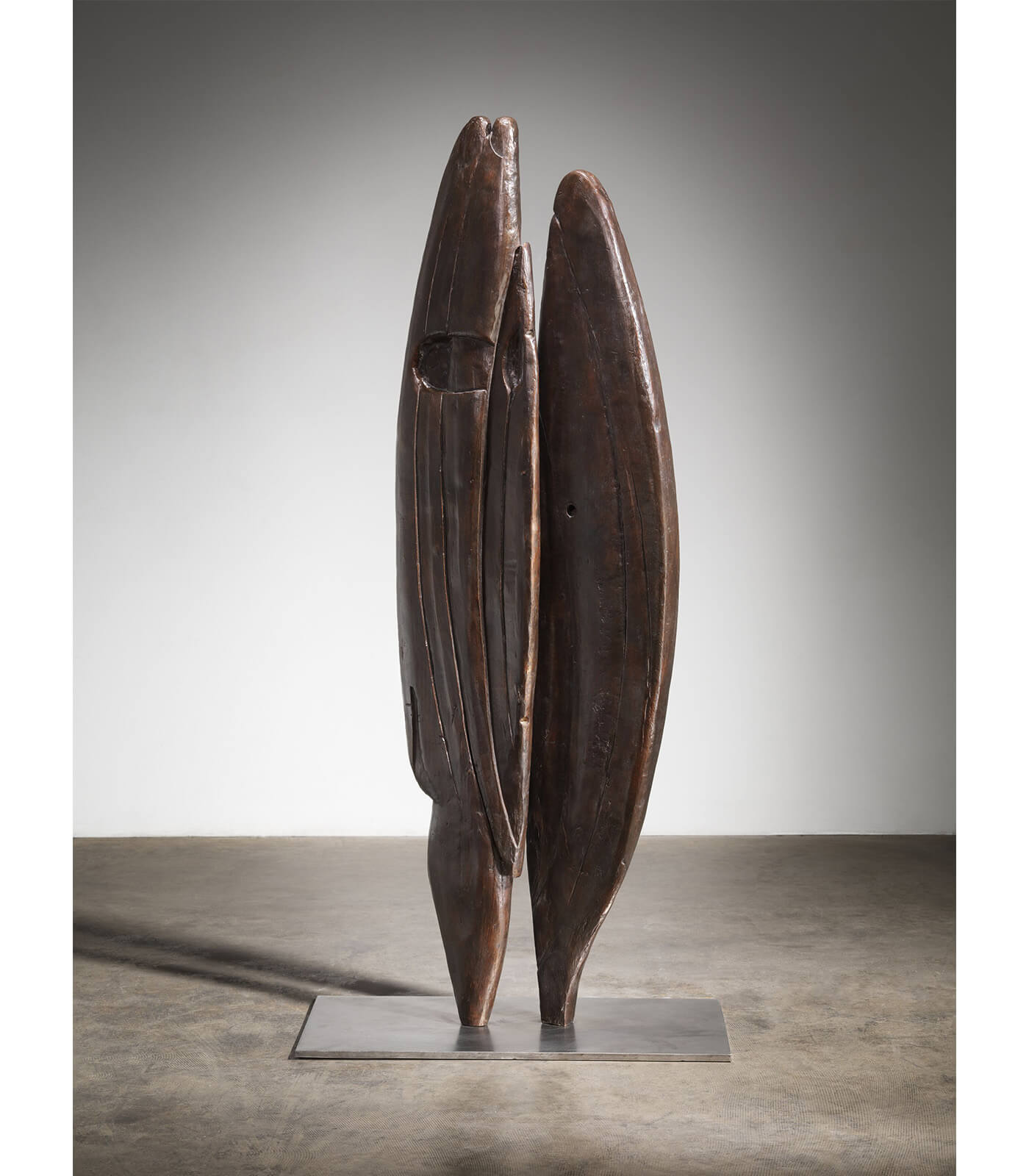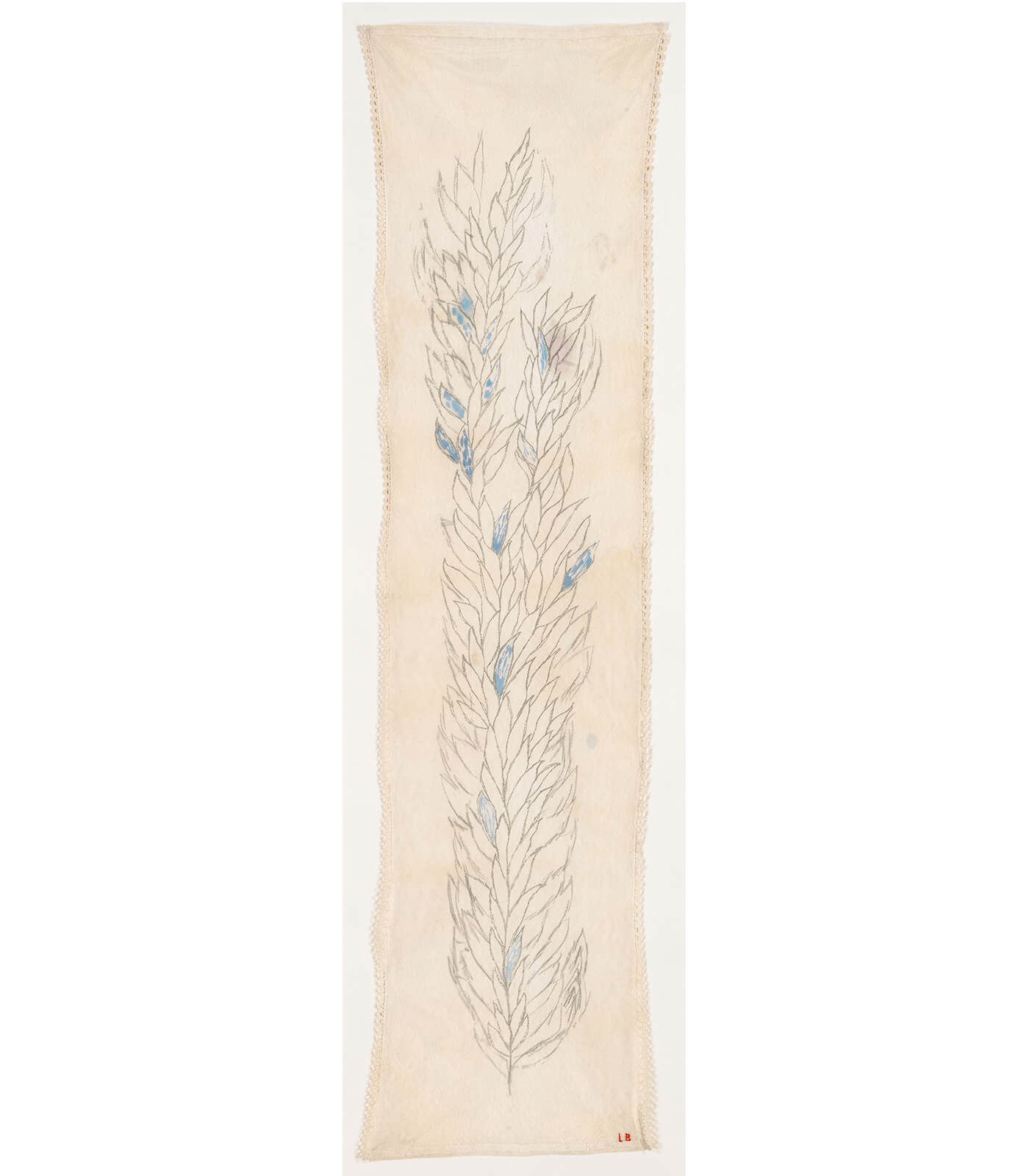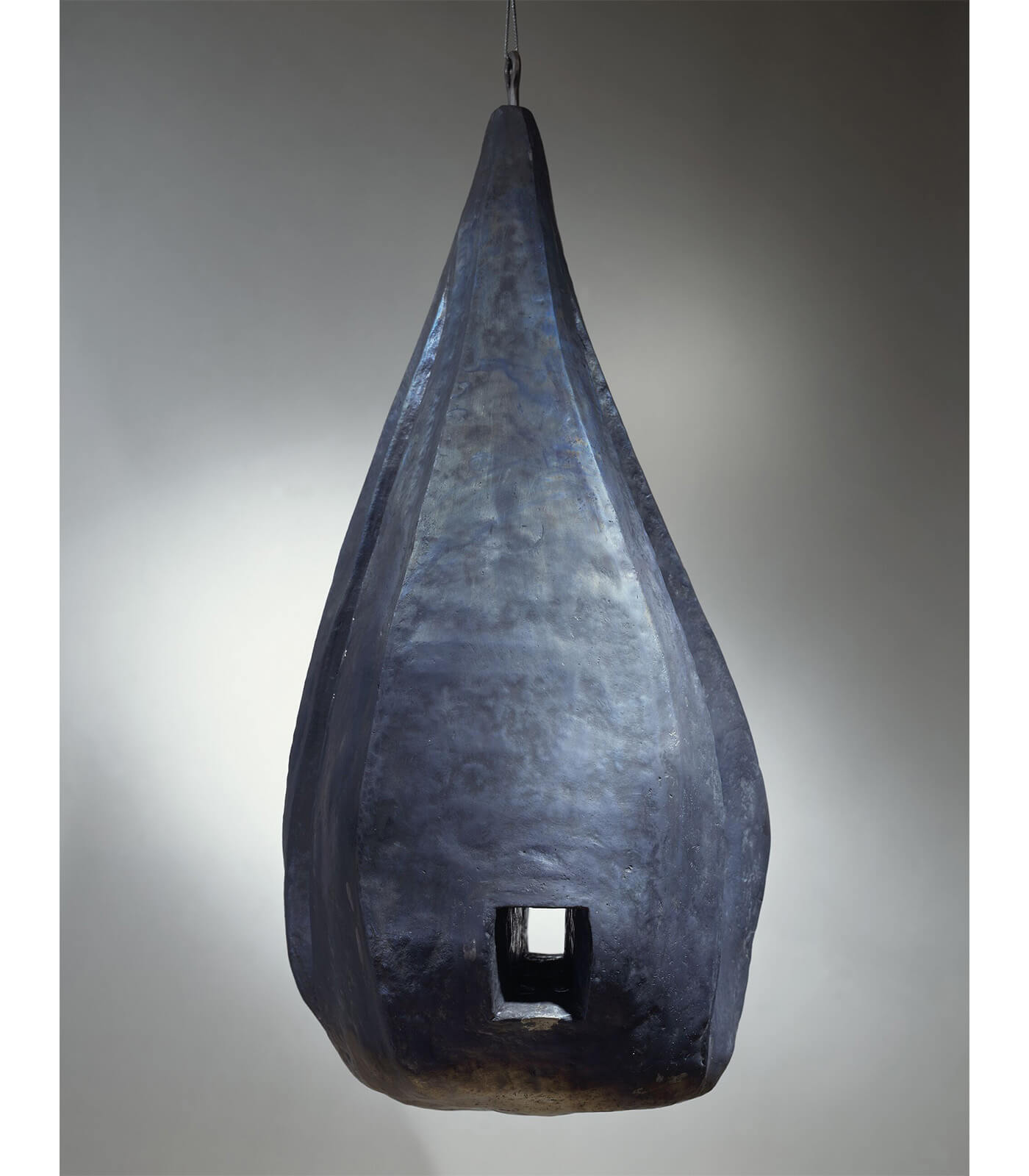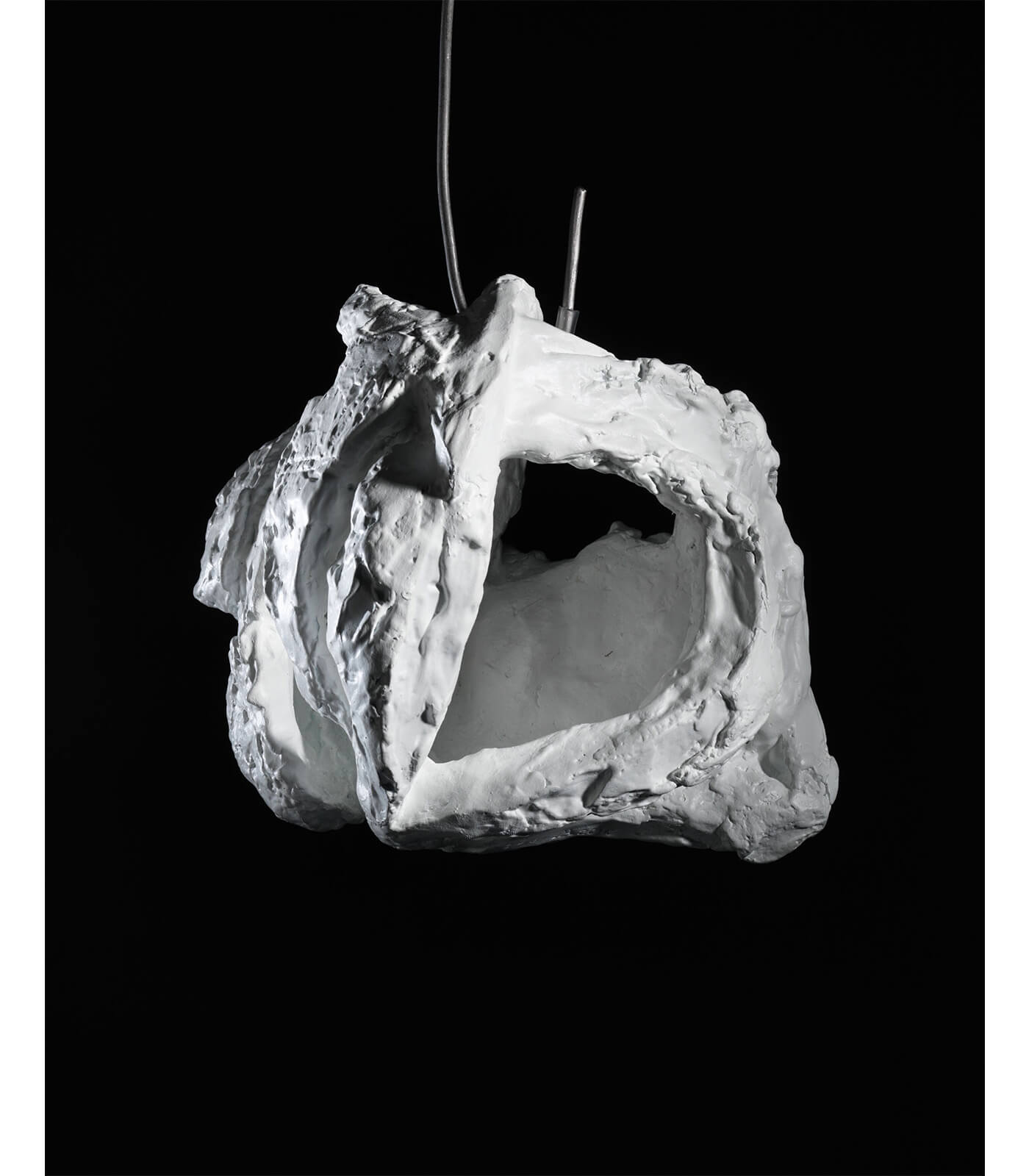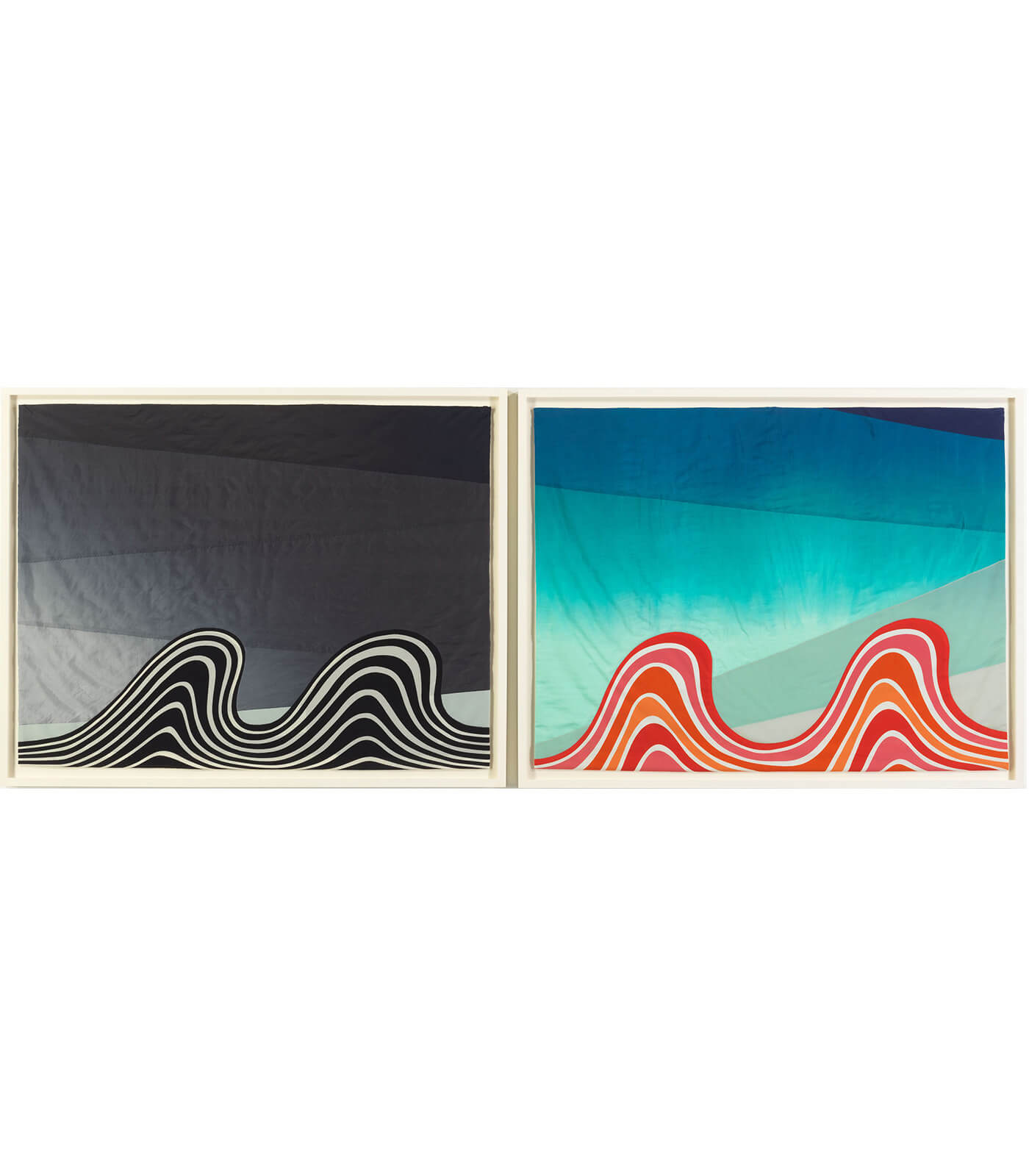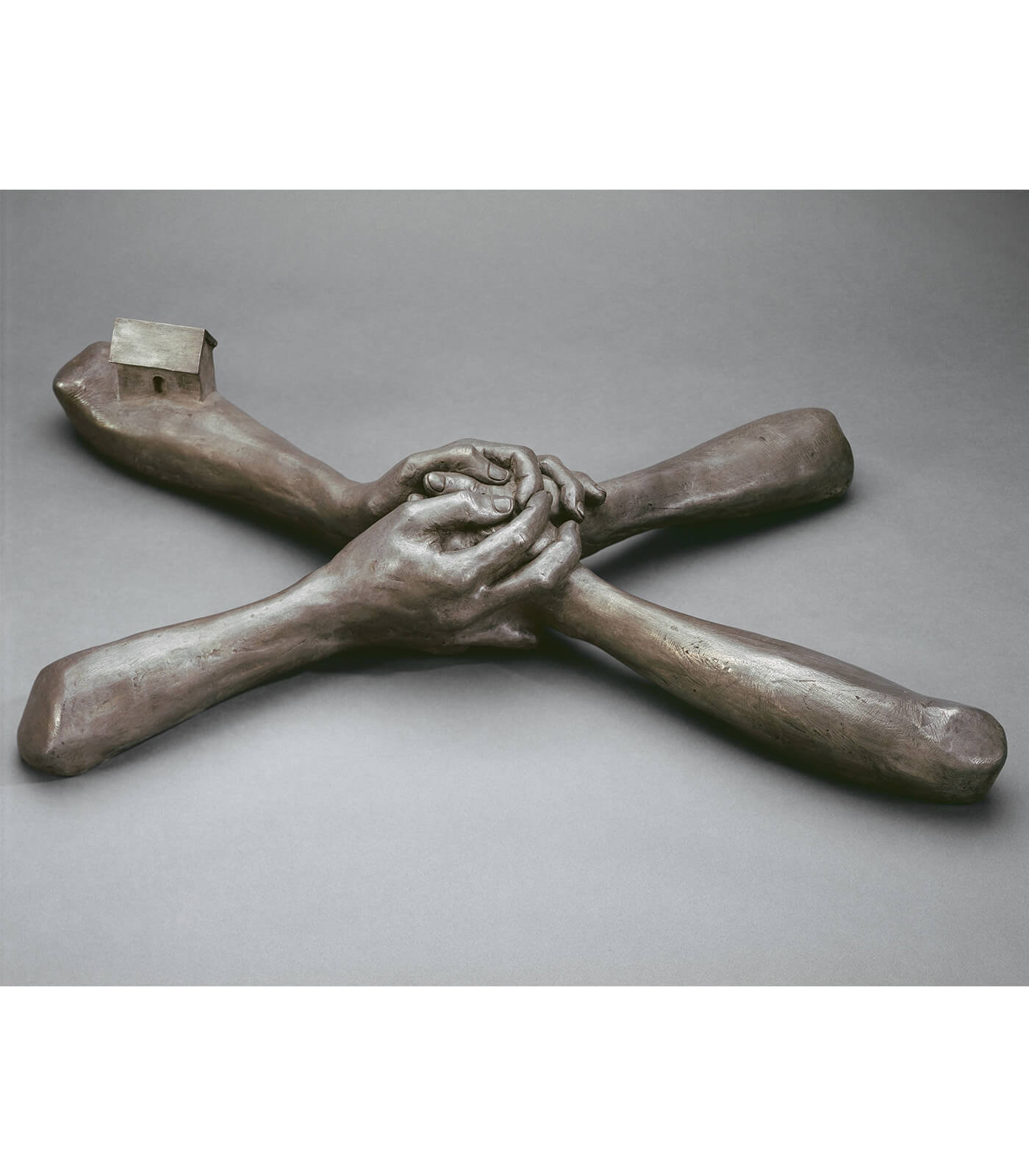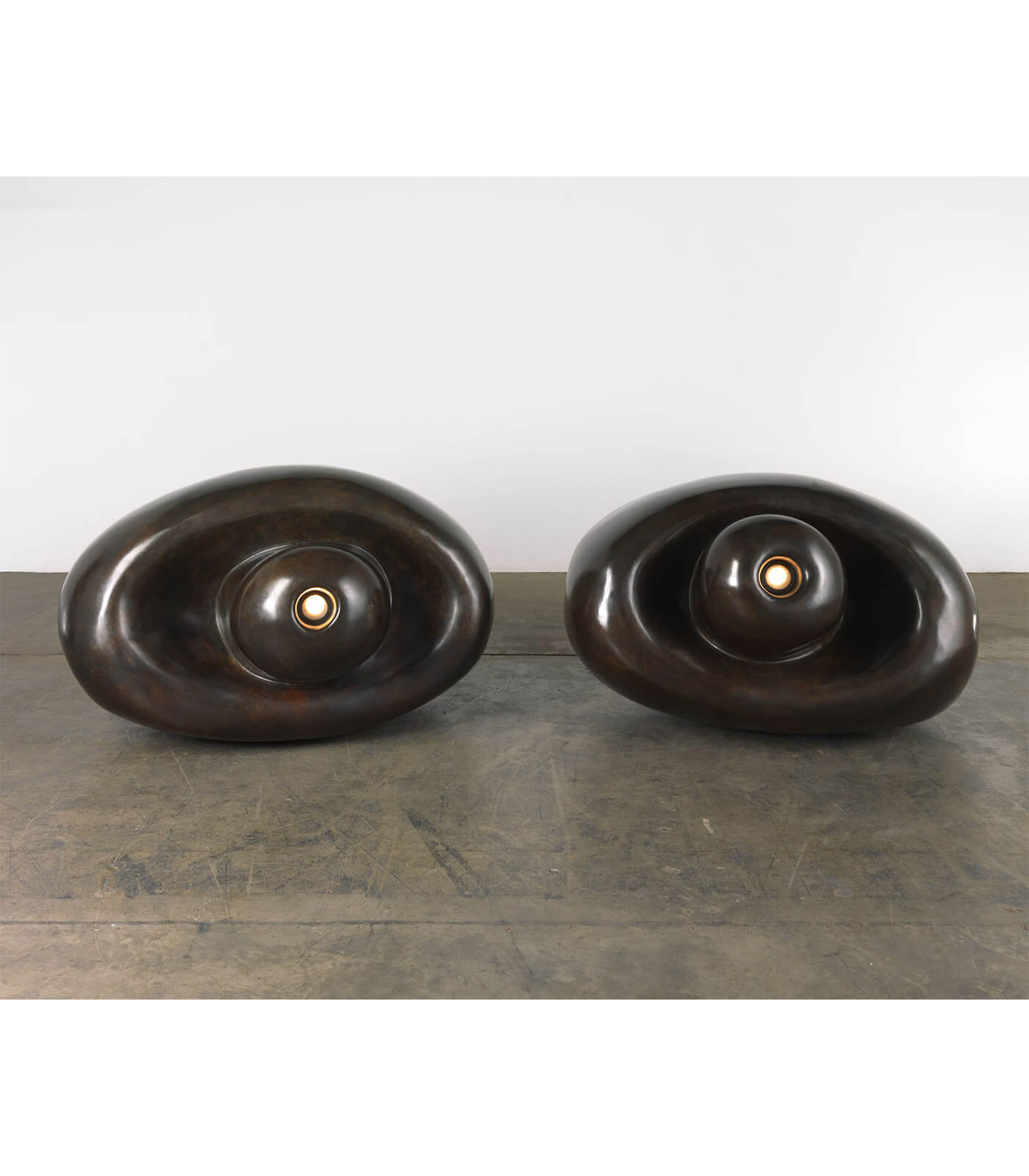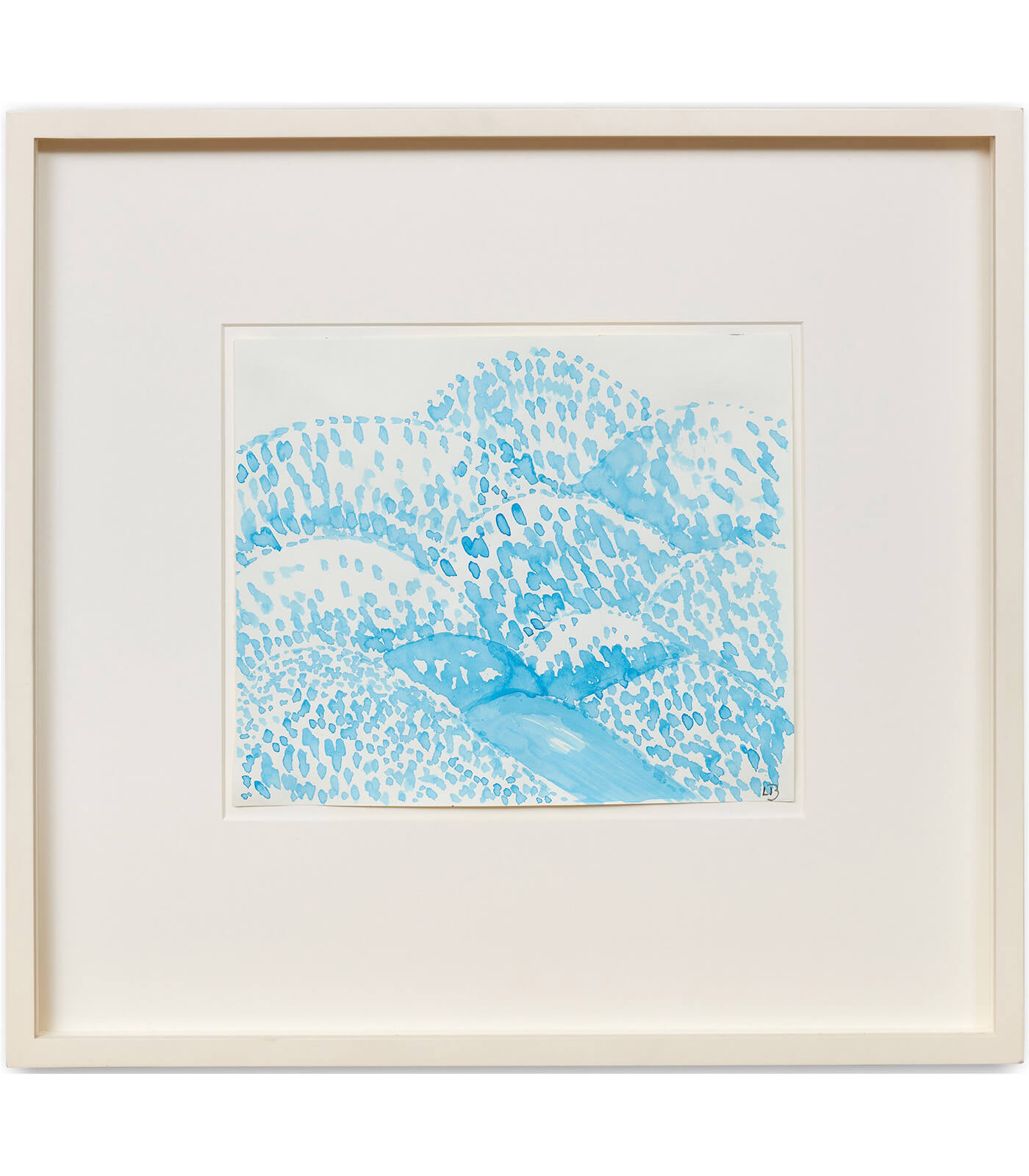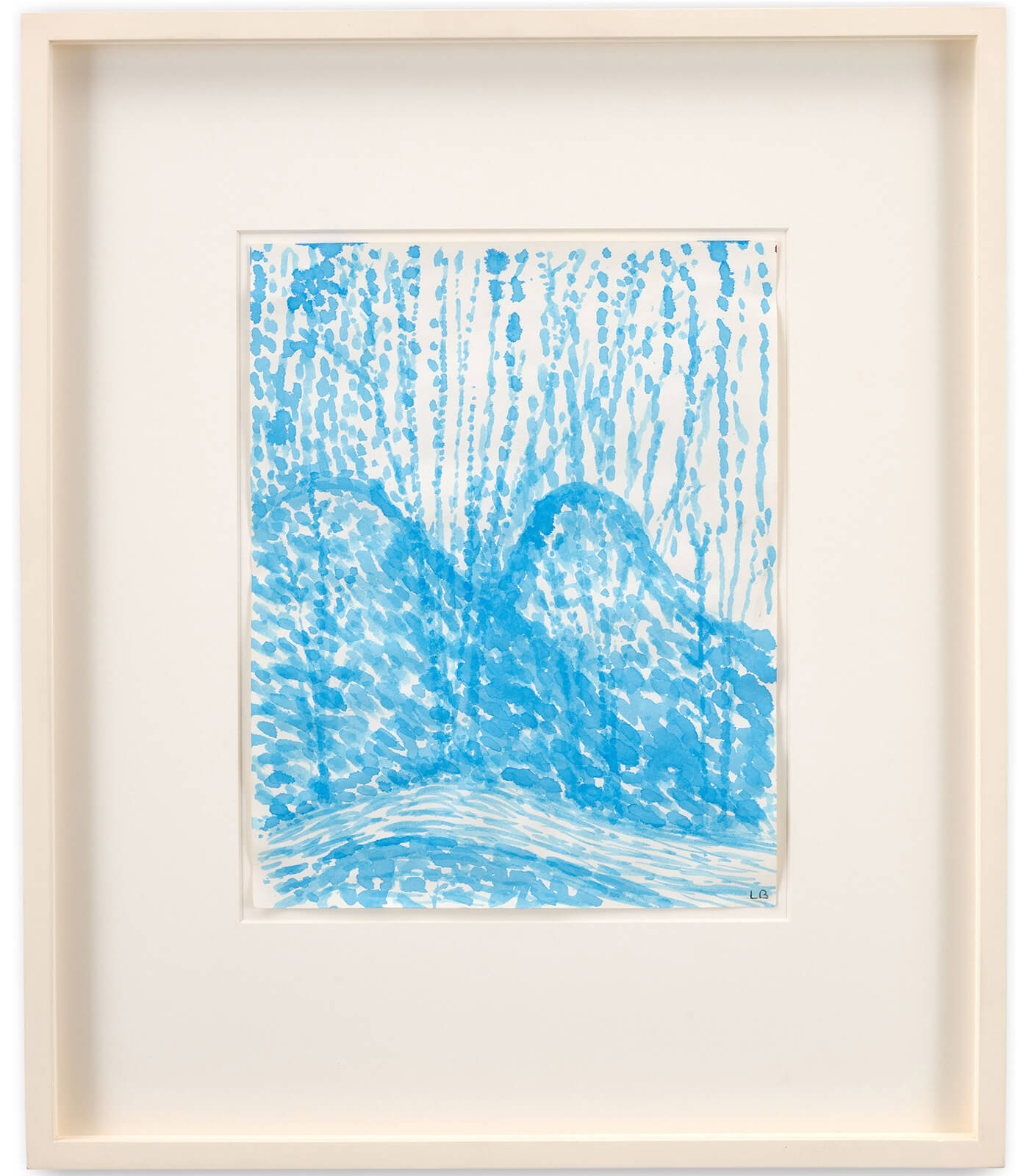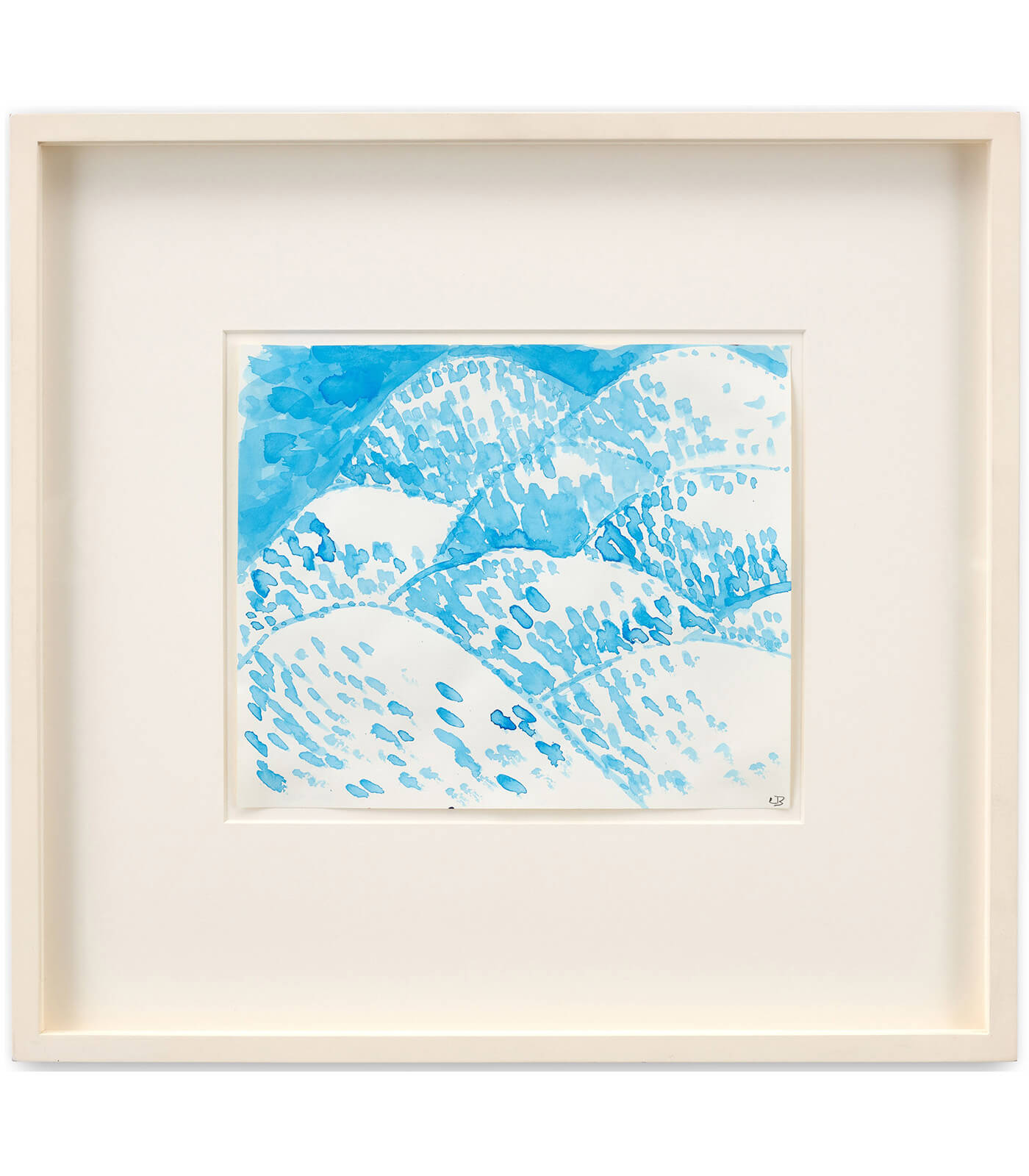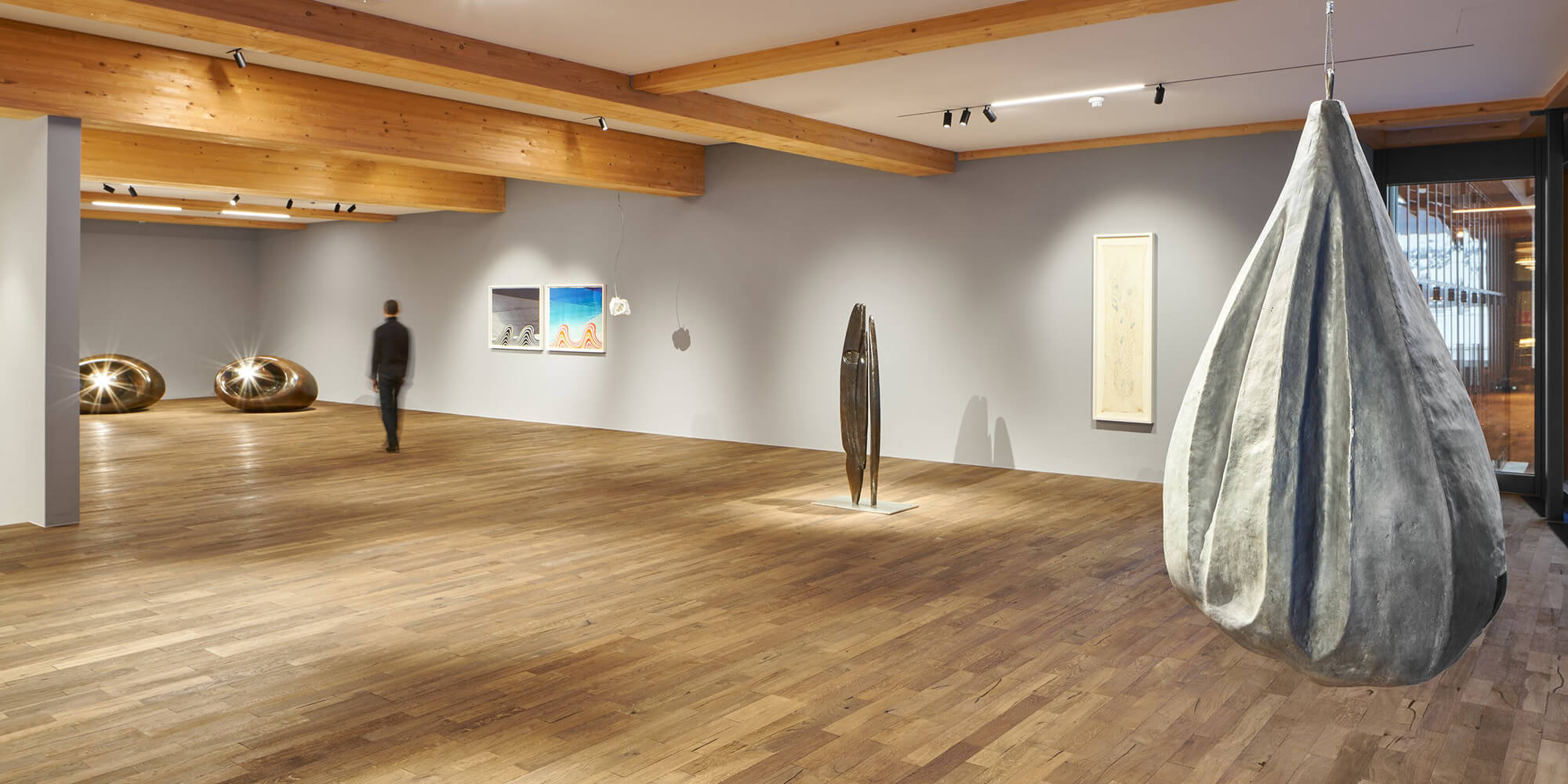
Louise Bourgeois
The Heart Has Its Reasons
19 December 2020 – 4 April 2021
Tarmak22, Gstaad
‘Would it be absurd to say that strength (the one I work so much on acquiring) is the competence of the heart’—Louise Bourgeois, loose sheet, c. 1955
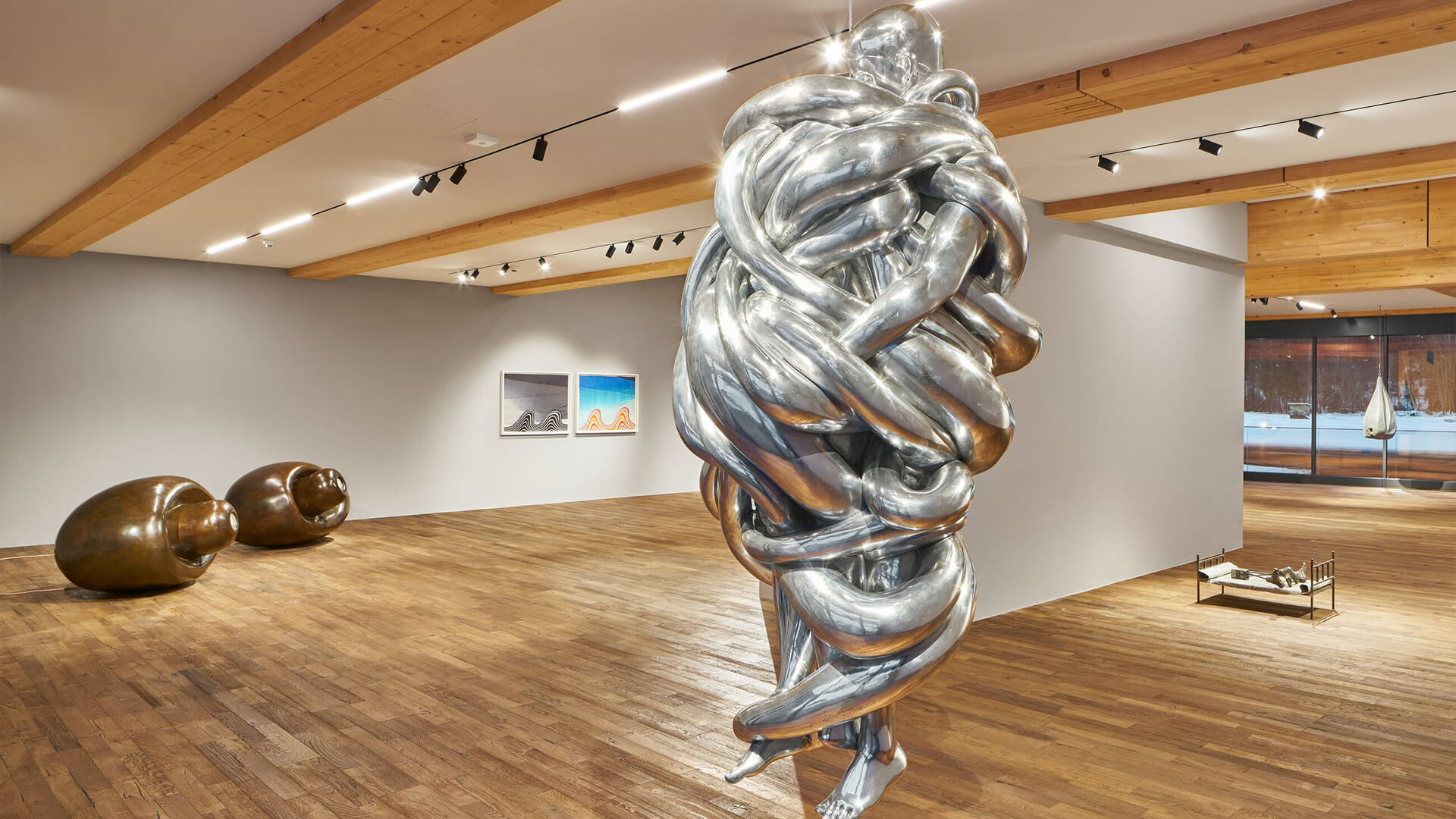
Explore the exhibition
This winter, Hauser & Wirth brings the work of one of the most celebrated artists of the 20th Century, Louise Bourgeois, to the Swiss Alps. On view at the exhibition space Tarmak22 in Gstaad, the exhibition takes its title from Blaise Pascal’s well-known phrase: ‘the heart has its reasons of which reason knows nothing.’
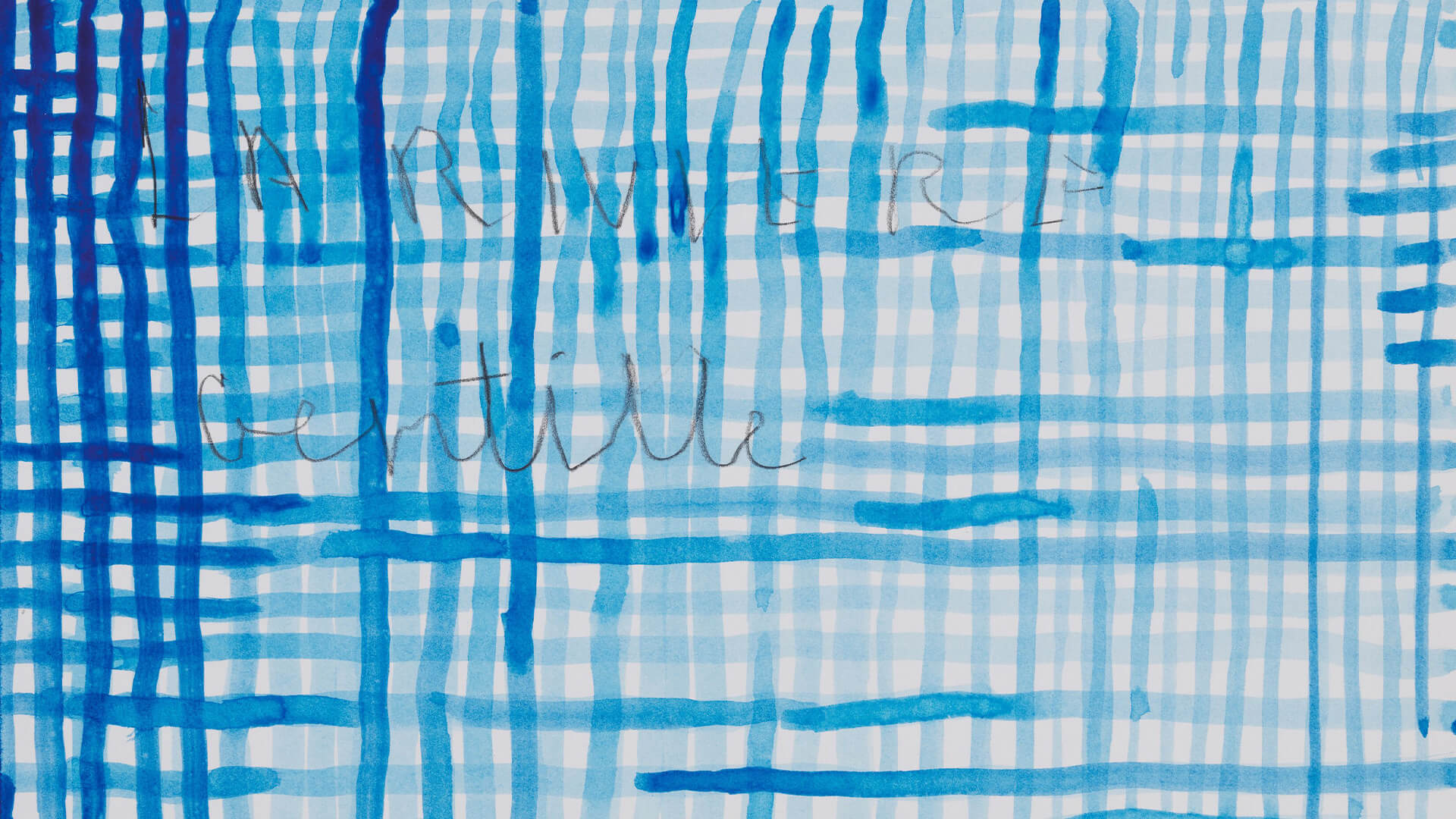
Bourgeois studied mathematics and philosophy at the Sorbonne, Paris, and wrote her thesis on Pascal; but the death of her mother in 1932 eventually led her to abandon these studies and turn to art making. Yet she remained a Pascalian, so to speak, in her belief that there is something in our emotional and psychological experience of the Other that eludes, or transcends, rational explanation. For Bourgeois, this relationship to the Other is a complex arrangement, and a world in itself.
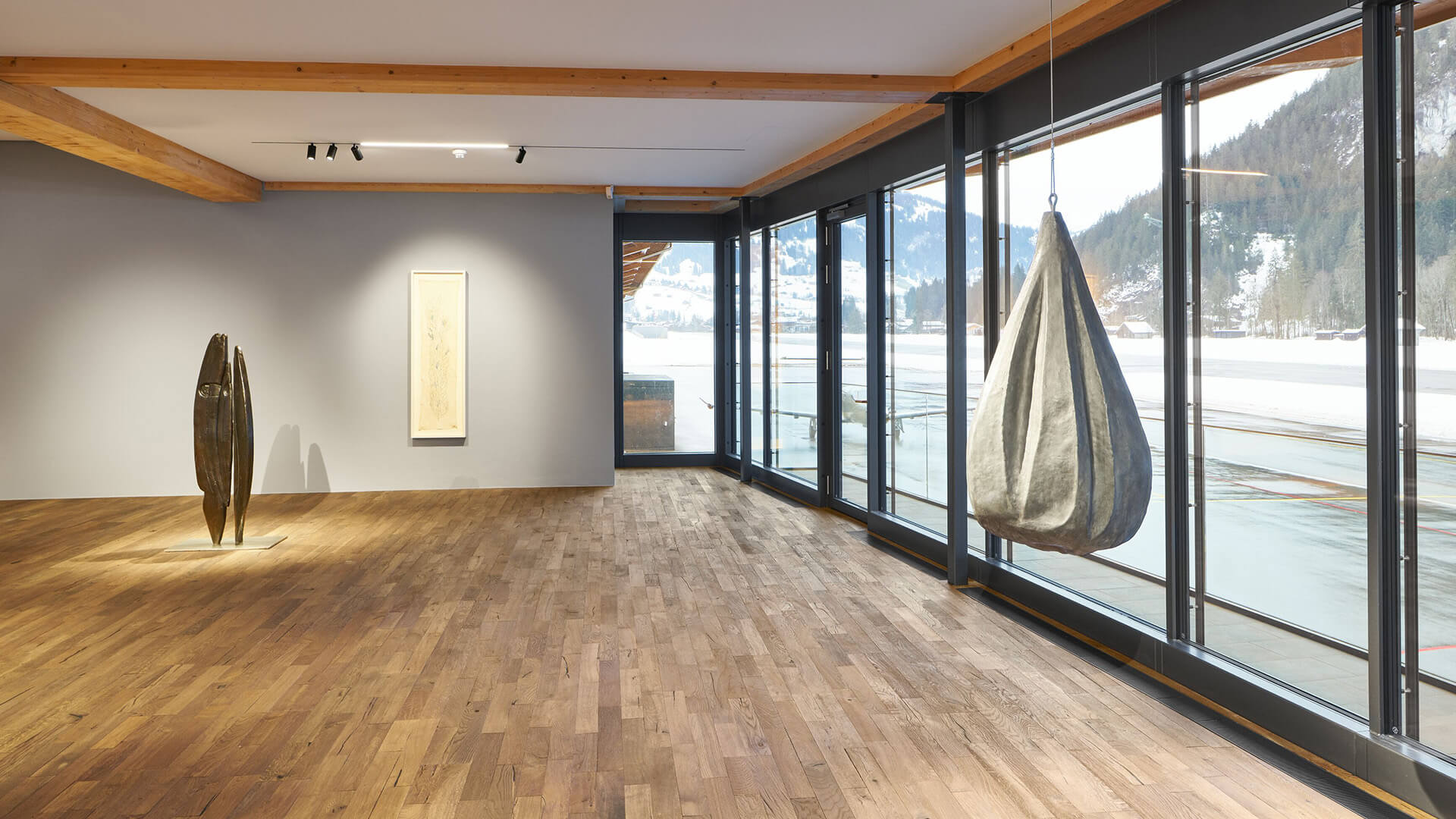
‘The Heart Has Its Reasons’ features a selection of important sculptures and drawings from the artist’s oeuvre spanning from 1949 until 2009, and explores themes central to her practice. The motifs that unify the presentation (the couple, the paired form, the house, the bed, landscape, and human anatomy) are grounded in the dynamic interplay between the binary oppositions—mind and body, geometric and organic, male and female, conscious and unconscious—that animate Bourgeois’ work as a whole. Above all, this exhibition speaks about Bourgeois’ need for love, the ‘polar star’ she could not live without.
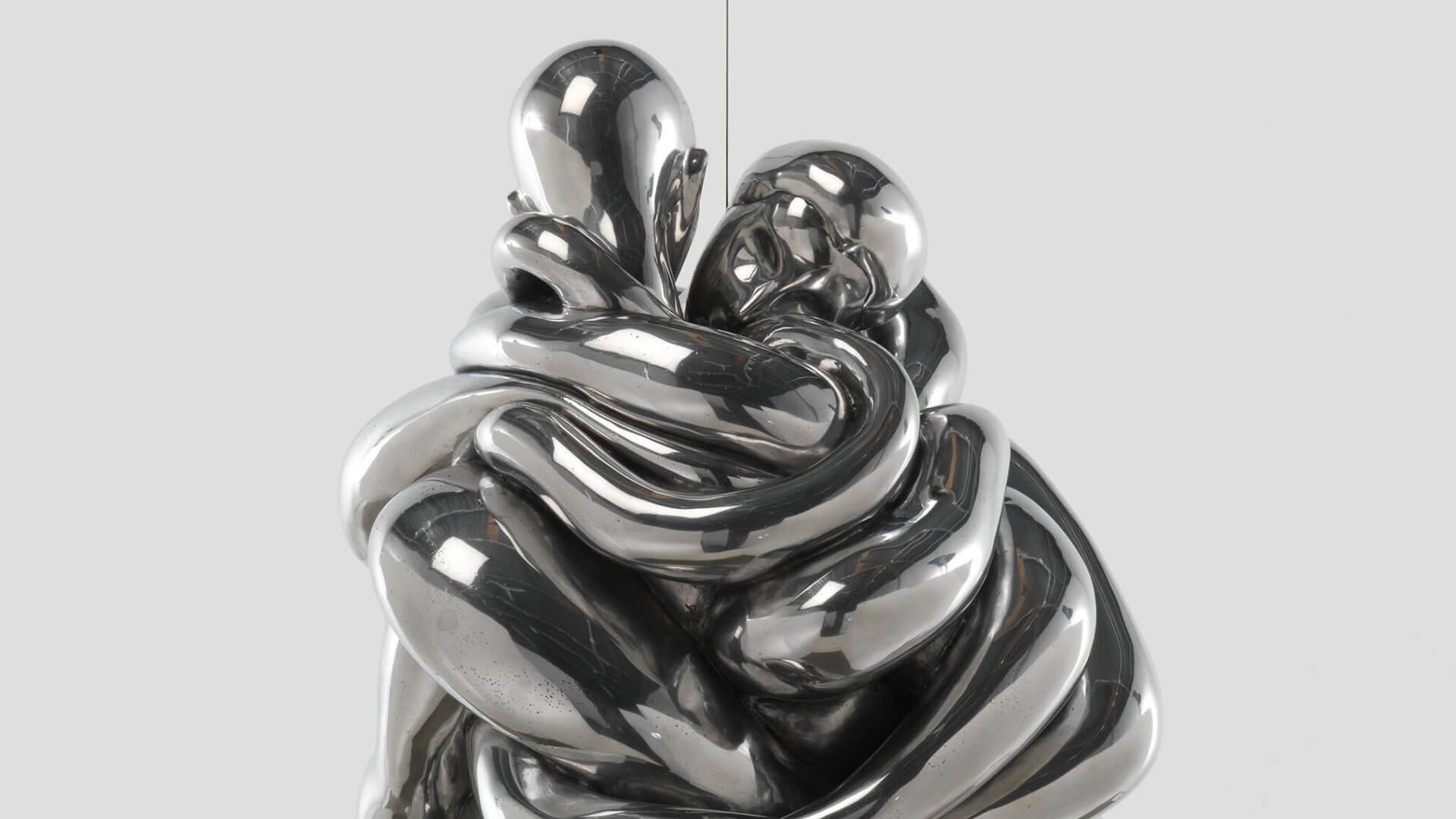
In one of the landmark sculptures in the presentation, ‘The Couple’ (2007-2009), the hair of the female figure is transformed into an eccentric spiral form that binds her together with the male figure. That the sculpture hangs from a single point expresses the fragility and precariousness of the relationship. The tight coils of the enveloping spiral are aimed at warding off the fear of separation and abandonment.
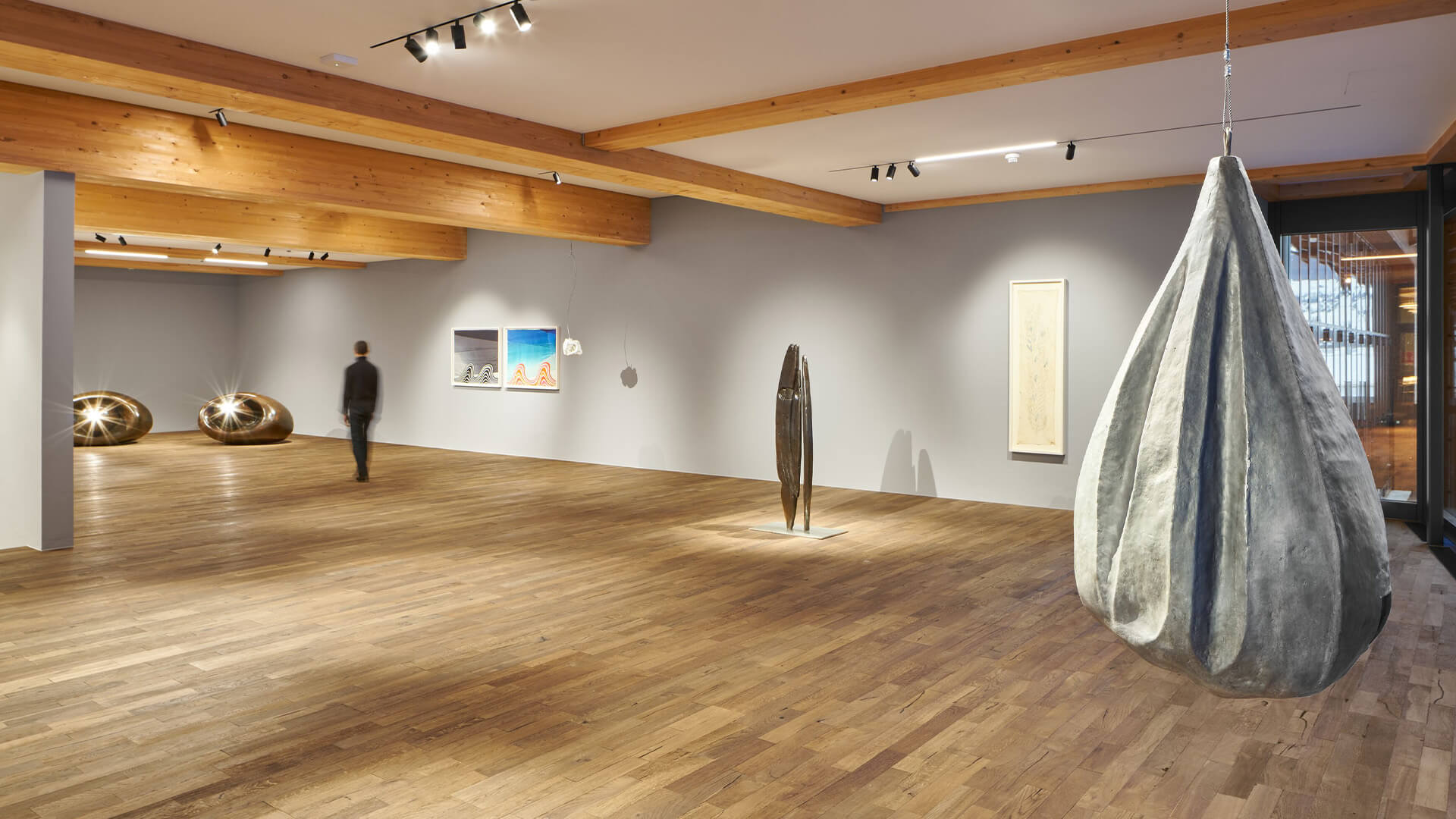
The motif of the house in Bourgeois’ work is similarly double-sided. In the two nest-like hanging Lairs (1962; 1986-2000), it is a metaphor for retreat and withdrawal, while the house that sits on one of the cast arms in ‘Untitled No. 7’ (1993) represents an ideal of repose, safety, and the happy couple.
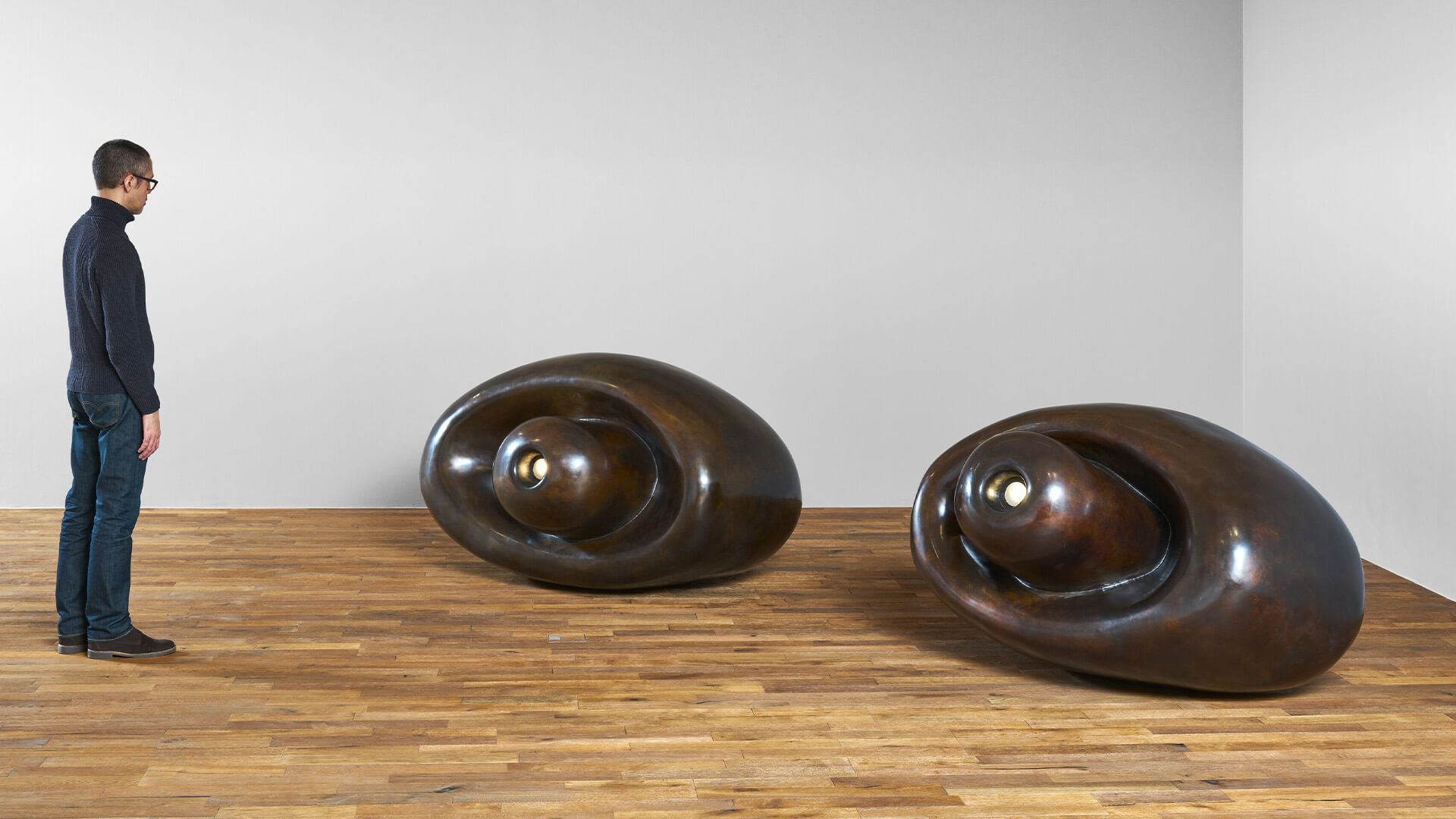
In ‘Eyes’ (2001), light emanates from the protruding pupils as if to project an inner psychic landscape onto external reality. For Bourgeois, the act of looking symbolizes introspection and self-knowledge, but also has its sexual and erotic side (that is, looking and being looked at).
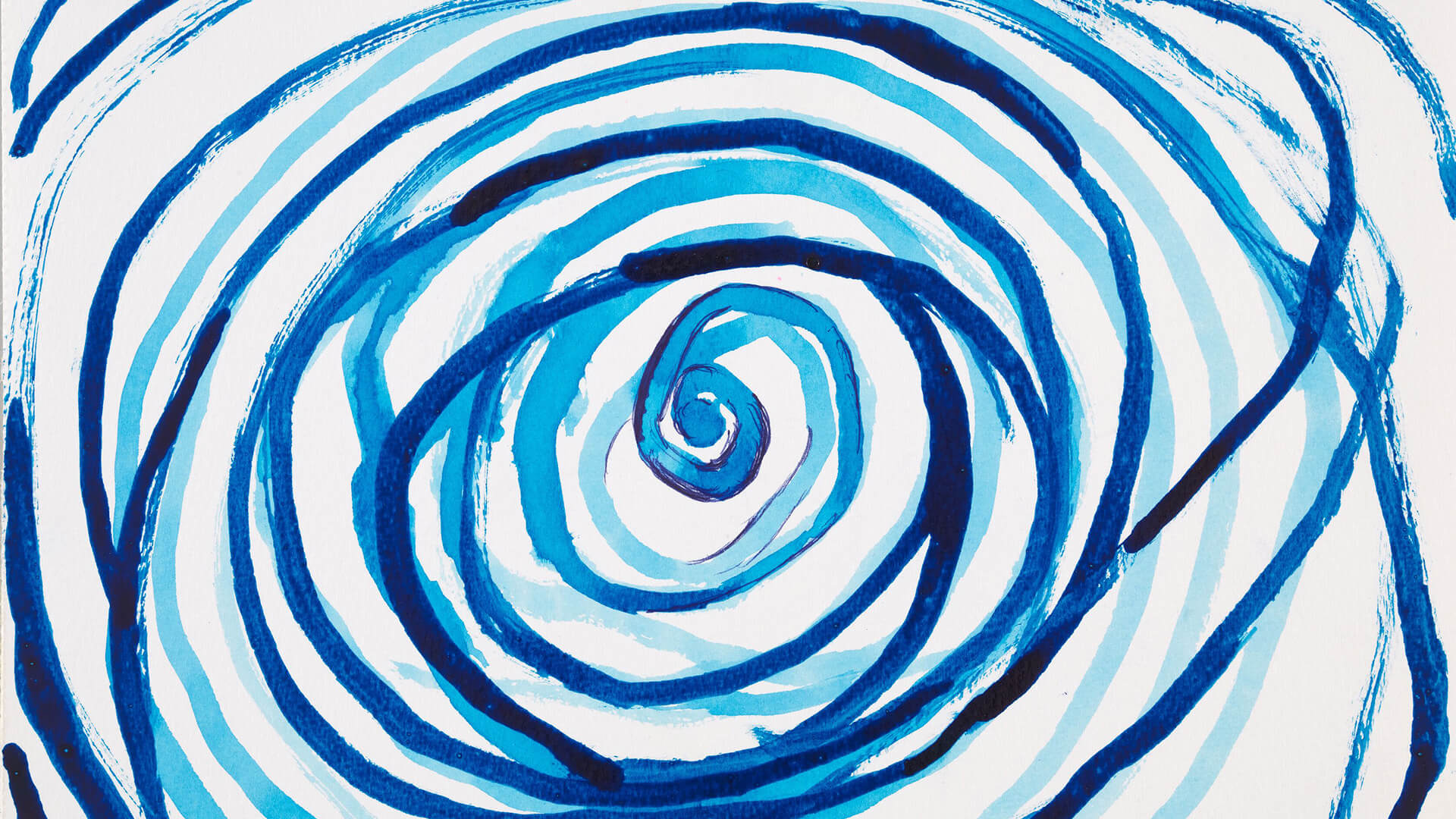
In the suite of drawings ‘La Rivière Gentille’ (2007), which alludes to the river Bièvre that flowed behind Bourgeois’ childhood home in Antony, landscape is introjected into the body, and person and place are merged through the artist’s act of recall. As Bourgeois wrote in the text (c. 1959) that formed the basis for this work: ‘The sound of a pebble falling into the black and distant water of a well. The unconscious memories that are reborn.’
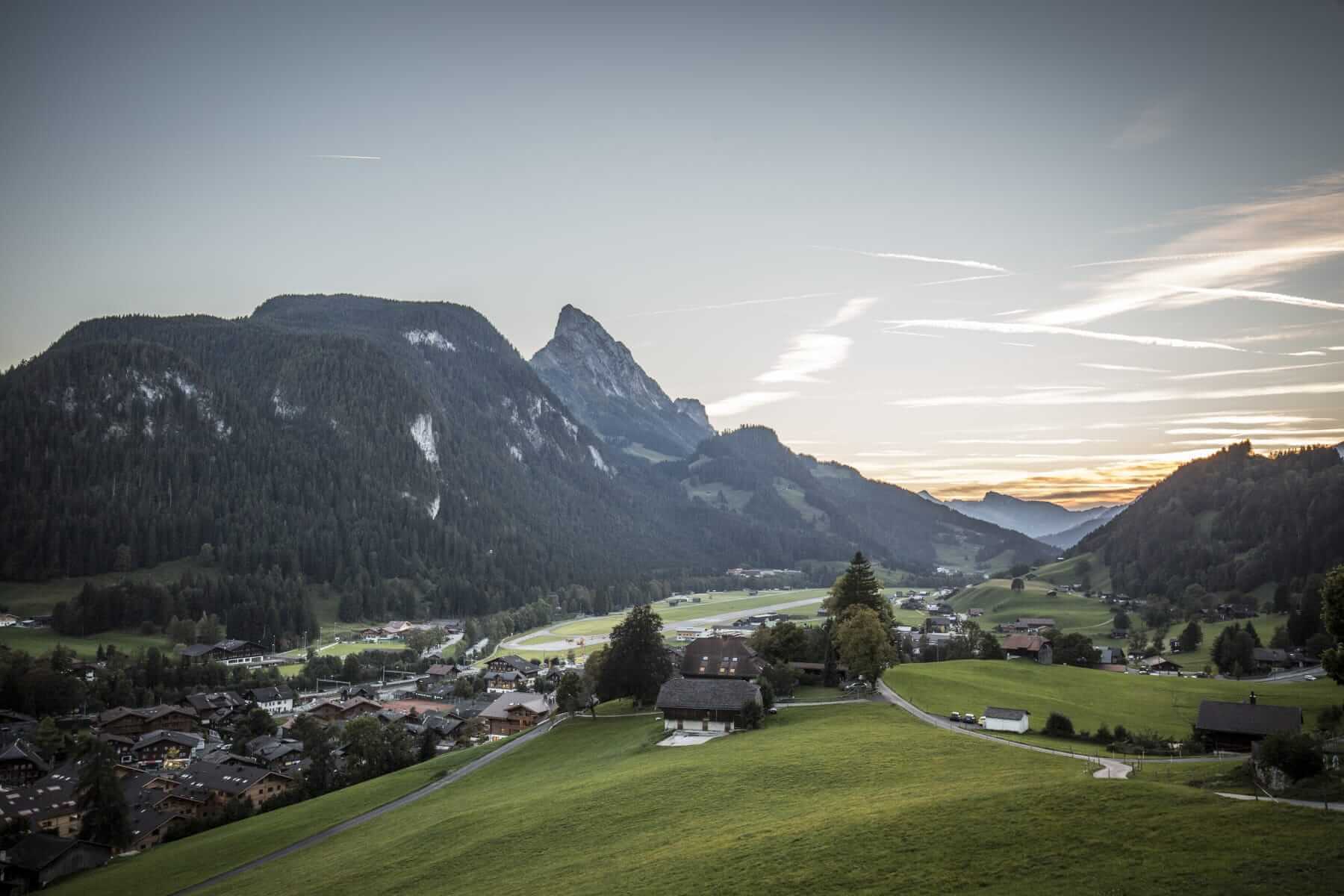
On view in Gstaad
In accordance with recent government guidance, the gallery will reopen on 2 March.
About the Artist
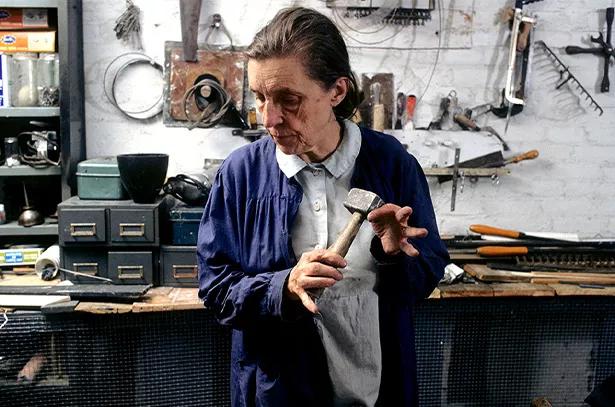
Louise Bourgeois
Born in France in 1911, and working in America from 1938 until her death in 2010, Louise Bourgeois is recognized as one of the most important and influential artists of our time. For over seven decades, Bourgeois’s creative process was fueled by an introspective reality, often rooted in cathartic re-visitations of early childhood trauma and frank examinations of female sexuality. Articulated by recurrent motifs (including body parts, houses and spiders), personal symbolism and psychological release, the conceptual and stylistic complexity of Bourgeois’s oeuvre—employing a variety of genres, media and materials—plays upon the powers of association, memory, fantasy, and fear.
Bourgeois’s work is inextricably entwined with her life and experiences: fathoming the depths of emotion and psychology across two- and three-dimensional planes of expression. ‘Art,’ as she once remarked in an interview, ‘is the experience, the re-experience of a trauma.’ Arising from distinct and highly individualized processes of conceptualization, Bourgeois's multiplicity of forms and materials enact a perpetual play: at once embedding and conjuring emotions, only to dispel and disperse their psychological grasp. Employing motifs, dramatic colors, dense skeins of thread, and vast variety of media, Bourgeois's distinctive symbolic code enmeshes the complexities of the human experience and individual introspection.
Rather than pursuing formalist concerns for their own sake, Bourgeois endeavored to find the most appropriate means of expressing her ideas and emotions, combining a wide range of materials—variously, fabric, plaster, latex, marble and bronze—with an endless repertoire of found objects. Although her oeuvre traverses the realms of painting, drawing, printmaking, and performance, Bourgeois remains best known for her work in sculpture.
Bourgeois’s early works include her distinct 'Personages' from the late 1940s and early 1950s; a series of free-standing sculptures which reference the human figure and various urban structures, including skyscrapers. The ‘Personages’ served as physical surrogates for the friends and family Bourgeois had left behind in France, while also highlighting an interest in architecture dating back to her childhood. Her installation of these sculptures as clustered ‘environments’ in 1949 and 1950 foreshadowed the immersive encounters of installation art twenty years before the genre’s rise to prominence.
Bourgeois’s work was included in the seminal exhibition ‘Eccentric Abstraction,’ curated by Lucy Lippard for New York's Fischbach Gallery in 1966. Major breakthroughs on the international scene followed with The Museum of Modern Art in New York's 1982 retrospective of her work; Bourgeois's participation in Documenta IX in 1992; and her representation of the United States at the 45th Venice Biennale in 1993.
In 2001, Bourgeois was the first artist commissioned to fill the Tate Modern’s cavernous Turbine Hall. The Tate Modern’s 2007 retrospective of her works, which subsequently traveled to the Centre Pompidou in Paris; The Guggenheim Museum in New York; The Museum of Contemporary Art in Los Angeles; and The Hirshhorn Museum & Sculpture Garden in Washington D.C., cemented her legacy as a foremost grande dame of late Modernism.
Header image: Louise Bourgeois, ARCHED FIGURE, 1993 © The Easton Foundation/VAGA, NY, Photo: Christopher Burke
Inquire about available works by Louise Bourgeois
The exhibition coincides with ‘Louise Bourgeois. To Unravel a Torment’ at the Serralves Museum, Porto, Portugal, on view from 3 December 2020 to 27 June 2021. Forthcoming projects include the upcoming exhibition ‘Louise Bourgeois, Freud’s Daughter’ opening next spring at The Jewish Museum in New York, NY, curated by Philip Larratt-Smith.
–
‘Louise Bourgeois. The Heart Has Its Reasons‘ is on view now through 4 April 2021 at Tarmak22, Gstaad.
© The Easton Foundation / 2020, ProLitteris, Zurich.
Current Exhibitions
1 / 9
